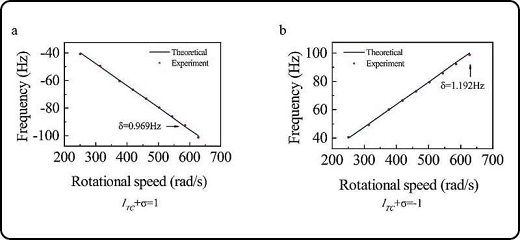by SPIE

Integrated terahertz vortex beam emitter for rotating target detection. Credit: Jingya Xie, USST
You may not realize it, but the Doppler effect is everywhere in our lives, from tracking the speed of cars with radar to locating satellites in the sky. It's all about how waves change their frequency when a source (like a radar signal) and a detector are in motion relative to each other. However, traditional radar systems hit a roadblock when trying to detect objects moving at right angles to their radar signals. This limitation has driven researchers to explore an entirely new approach.
Imagine a radar system that doesn't just rely on linear waves but instead uses spiraling electromagnetic waves with orbital angular momentum (OAM). These special "vortex" waves have a helical twist and introduce a signature rotational Doppler effect when they encounter a spinning object.
To improve identification and detection of these rotational Doppler effects, researchers from University of Shanghai for Science and Technology (USST) have harnessed terahertz (THz) waves by developing an integrated THz vortex beam emitter, as reported in Advanced Photonics.
According to USST Professor Yiming Zhu, corresponding author for the article, "To the best of our knowledge, this study represents the first demonstration of an integrated THz vortex beam emitter specifically designed for the detection of rotating targets."
THz waves are uniquely suited for high-resolution radar imaging. In terms of frequency, they reside between microwaves and infrared waves, and have a unique ability to penetrate various materials while carrying minimal risk of damage. Yet while THz waves show great promise, they face their own set of challenges, such as low efficiency and instability issues.

Measurement results of rotating speed (a) for OAM mode +1 and (b) for OAM mode -1. The rotational speeds are from 251 rad/s to 628 rad/s. The red points are the measured data, and the solid blue lines are the theoretical values. Note: δ is the absolute error. Credit: Jingya Xie, USST.
Pinpointing rotational speed
Investigating possibilities for practical and tunable THz vortex emitters along with corresponding detection schemes, the research team developed a new approach combining an integrated THz emitter and vortex beams with positive and negative charges. By manipulating the frequency of these vortex beams, they can generate radar signals that accurately measure the speed of a rotating object. This breakthrough offers a way to pinpoint an object's rotational speed with remarkable precision, with a maximum margin of error of just around 2 percent.
Their design involves the manipulation of the frequency to access different resonances in the beam emitter cavity, thereby enabling the generation of vortex beams with ±1 topological charges. These vortex beams subsequently illuminate a rotating object, and the resulting echo of the light waves can be received directly by a linearly polarized antenna. Through effective identification and detection of the rotational Doppler effect within the frequency spectrum, the rotational speed of the object can be accurately quantified.
The team also reportedly overcame a tricky problem related to polarization, making this radar system highly suitable for detecting rotation in the THz frequency range.
This innovative radar technology opens up exciting possibilities for a wide range of applications. Not only does it hold the potential to enhance radar target detection, but it could also usher in new countermeasure systems for tactical military defense. Plus, it's cost-effective and scalable, which means we might see this cutting-edge technology deployed sooner than we think.

